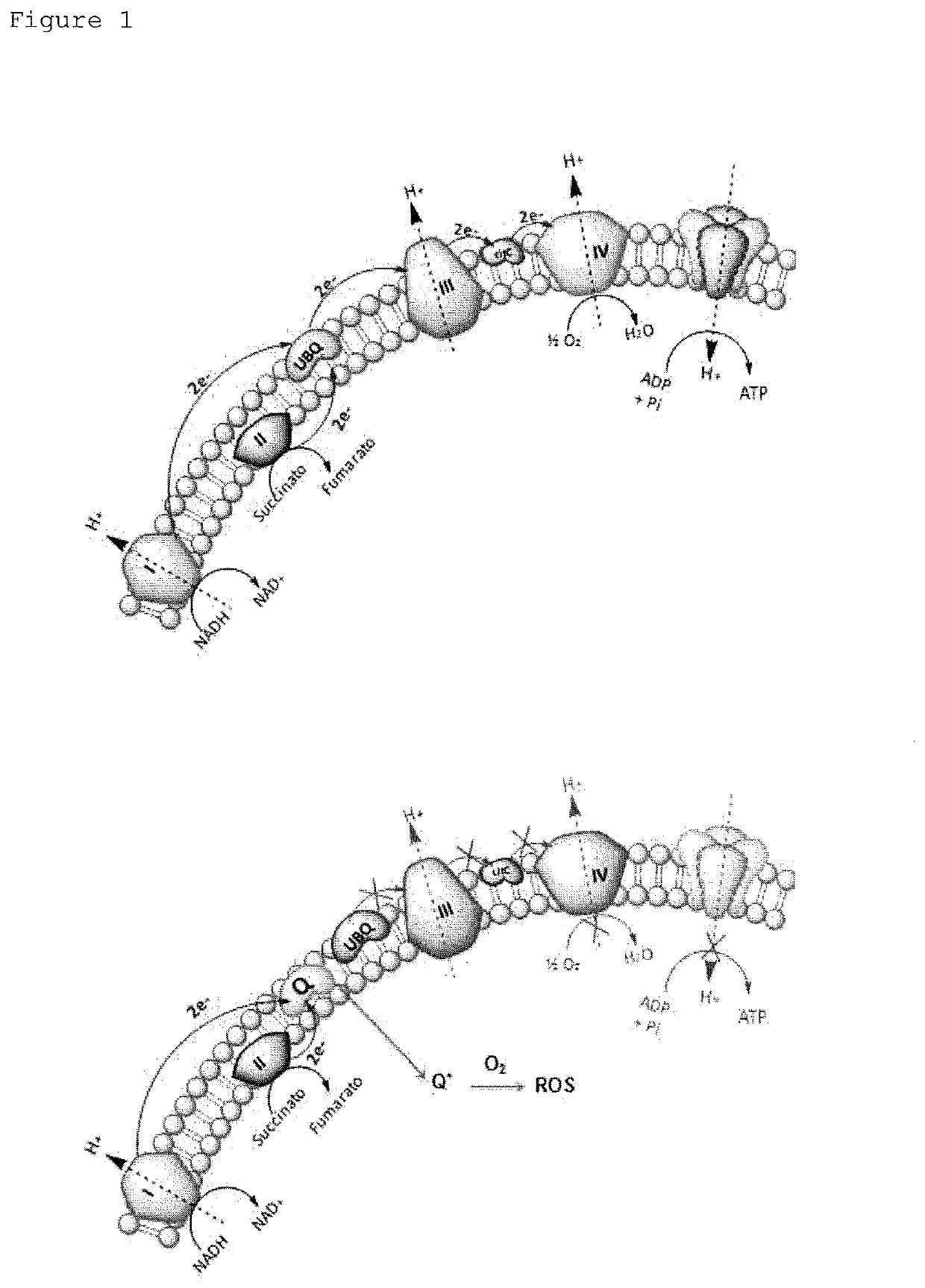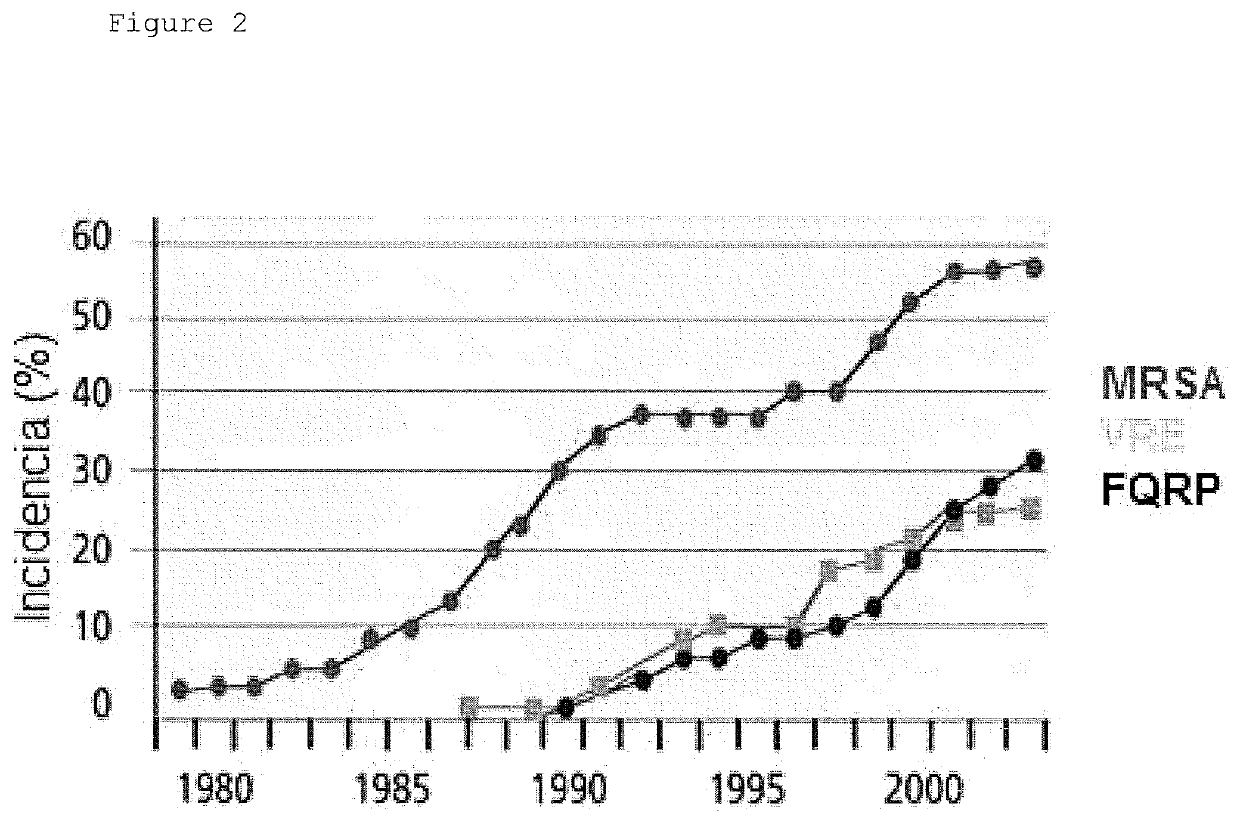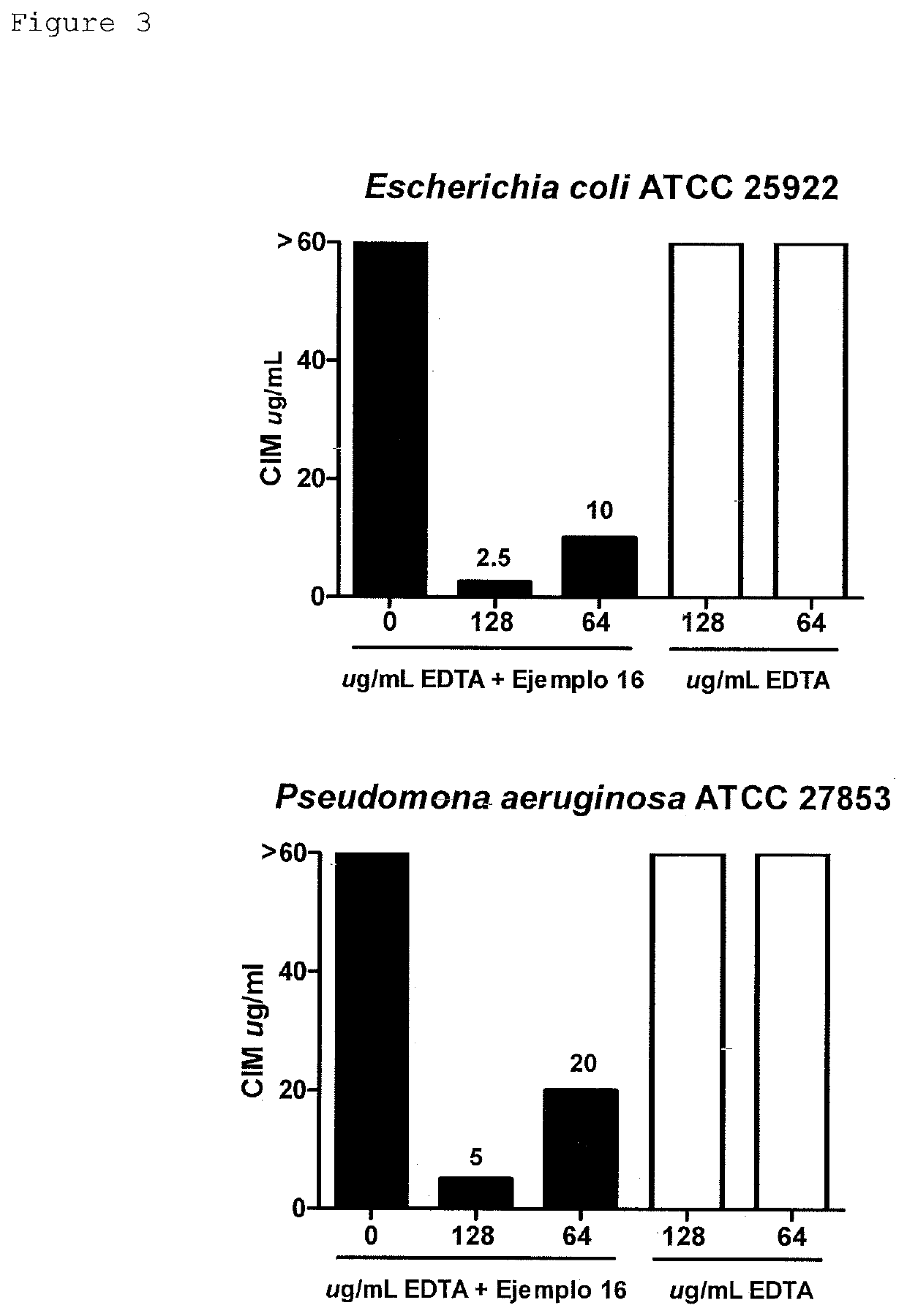Pyrimido-isoquinolin-quinone derivative compounds, and pharmaceutically acceptable salts, isomers and tautomers thereof; pharmaceutical composition; preparation method; and use thereof in the treatment of diseases caused by bacteria and multidrug-resistant bacteria
a technology of pyrimidoisoquinolin and derivative compounds, which is applied in the field of pyrimidoisoquinolinquinone derivative compounds, and pharmaceutically acceptable salts, isomers and tautomers thereof, can solve the problems of inability to complete research, death of many people, and inability of researchers to combat infectious diseases
- Summary
- Abstract
- Description
- Claims
- Application Information
AI Technical Summary
Benefits of technology
Problems solved by technology
Method used
Image
Examples
example 1
General Procedure to Obtain 6-ethyl-2,4-dimethylpyrimido[4,5-c]isoquinoline-1,3,7,10(2H,4H)-tetraone (Intermediate Compound 1)
[0207]
[0208]A solution of 1-(2,5-dihydroxyphenyl)-propan-1-one (166.6 mg, 1 mmol), 6-amino-1,3-dimethylpyrimido-2,4(1H,3H)-dione (201.7 mg, 1.3 mmol), MgSO4 (300.0 mg, 3 mmol), Ag2O (927.0 mg, 3 mmol) in CH2Cl2 (20 ml) is kept under agitation for 2 hours. The progress of the reaction is monitored by thin layer chromatography at 30, 60, 90 and 120 minutes. The reaction crude is vacuum filtered with filter paper and Buchner funneled celite using CH2Cl2 to entrain the product. The solution obtained from the filtration evaporates until dry. The resulting solid is purified with 30 g of Silica gel (0.040-0.063 mm) using dichloromethane:ethyl acetate=9:1 as the mobile phase. A yellow solid of 244.7 mg, 0.65 mmol is obtained with an 80% yield.
[0209]Melting point 167.6-167.9° C. HRMS (M+): m / z calculated C15H13N3O4=299.09061; found=299.09070. IR (KBr):1667.28 cm-1 C═O...
example 2
Obtaining 6-ethyl-2,4-dimethyl-8-(phenythio)pyrimido[4,5-c]isoquinoline-1,3,7,10(2H,4H)-tetraone (2)
[0210]
[0211]A solution of 6-ethyl-2,4-dimethylpyrimido[4,5-c]isoquinoline-1,3,7,10(2H,4H)-tetraone (1) (452.02 mg, 2.0 mmol), heptahydrated cerium (III) trichloride (0.5% mole of 1) in a mixture of CH2Cl2:MetOH=1:1 (10 ml), is added a solution of thiophenol (83.20 mg, 1.0 mmol) dissolved in CH2Cl2:MetOH=1:1 (30 ml) by dripping from a side key burette at a rate of approximately 1 ml / 30 min for 16 hours. The crude reaction is purified with 50 g of Silica gel (0.040-0.063 mm) using dichloromethane:petroleum ether:ethyl acetate=9:8:1 as the mobile phase. An orange-colored solid of 196 mg, 0.48 mmol is obtained, with a 67% yield.
[0212]Melting point 179.4-180.0° C. HRMS (M+): m / z calculated C21H17N3O4S[M+]=407.09398; found=407.09400. IR (KBr): 1660.18, 1688.50 cm-1 C═O (quinone); 1723.89 cm-1 C═O (uracil). 1H RMN (CDCl3, 400 MHz): δ 1.38 (t, 3J=7.3 Hz, 3H, 6-CH2CH3), 3.42 (c, 3J=7.3 Hz, 2H,...
example 3
Obtaining 6-ethyl-2,4-dimethyl-8-(o-tolylthio)pyrimido[4,5-c]isoquinoline-1,3,7,10(2H,4H)-tetraone (3)
[0213]
[0214]A solution of 6-ethyl-2,4-dimethylpyrimido[4,5-c]isoquinoline-1,3,7,10(2H,4H)-tetraone (1) (436.98 mg, 2.0 mmol), heptahydrated cerium (III) trichloride (0.5% mole of 1) in a mixture of CH2Cl2:MetOH=1:1 (10 ml), is added a solution of 2-methylthiophenol (90.67 mg, 1.0 mmol) dissolved in CH2Cl2:MetOH=1:1 (30 ml) by dripping from a side key burette at a rate of approximately 1 ml / 30 min for 16 hours. The reaction crude is purified with 50 g of Silica gel (0.040-0.063 (mm) using dichloromethane:petroleum ether:ethyl acetate=9:10:1 as the mobile phase. An orange-colored solid of 210 mg, 0.50 mmol is obtained, with a 72% yield.
[0215]Melting point 206.0-210.9° C. HRMS (M+): m / z calculated C22H19N3O4S[M+]=421.10963; found=421.10957. IR (KBr): 1660.18, 1688.50 cm-1 C═O (quinone); 1730.97 cm-1 C═O (uracile).
[0216]1H RMN (CDCl3, 400 MHz): δ 1.38 (t, 3J=7.2 Hz, 3H, 6-CH2CH3), 2.43 ...
PUM
| Property | Measurement | Unit |
|---|---|---|
| concentrations | aaaaa | aaaaa |
| concentration | aaaaa | aaaaa |
| concentration | aaaaa | aaaaa |
Abstract
Description
Claims
Application Information
 Login to View More
Login to View More - R&D
- Intellectual Property
- Life Sciences
- Materials
- Tech Scout
- Unparalleled Data Quality
- Higher Quality Content
- 60% Fewer Hallucinations
Browse by: Latest US Patents, China's latest patents, Technical Efficacy Thesaurus, Application Domain, Technology Topic, Popular Technical Reports.
© 2025 PatSnap. All rights reserved.Legal|Privacy policy|Modern Slavery Act Transparency Statement|Sitemap|About US| Contact US: help@patsnap.com



